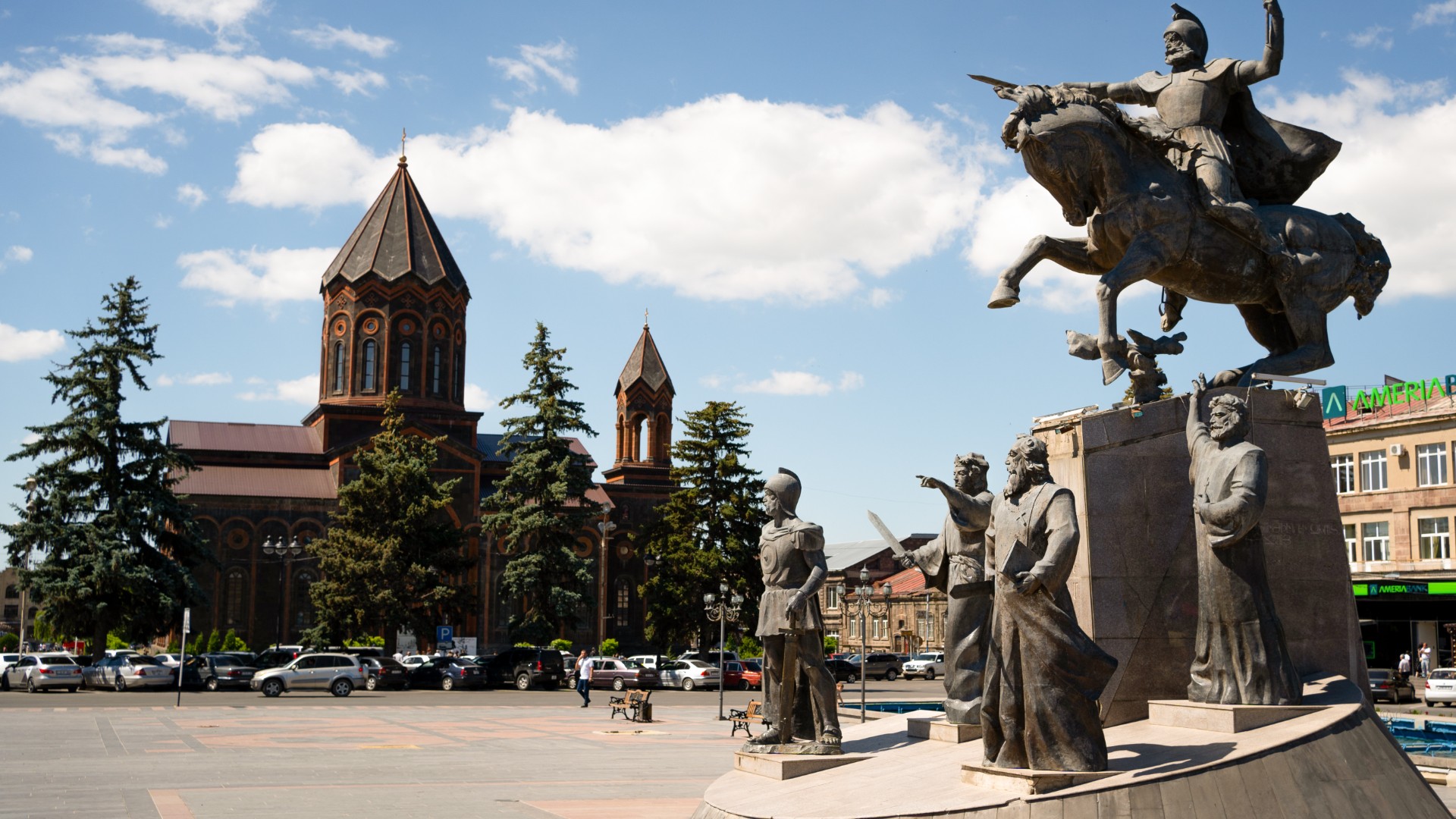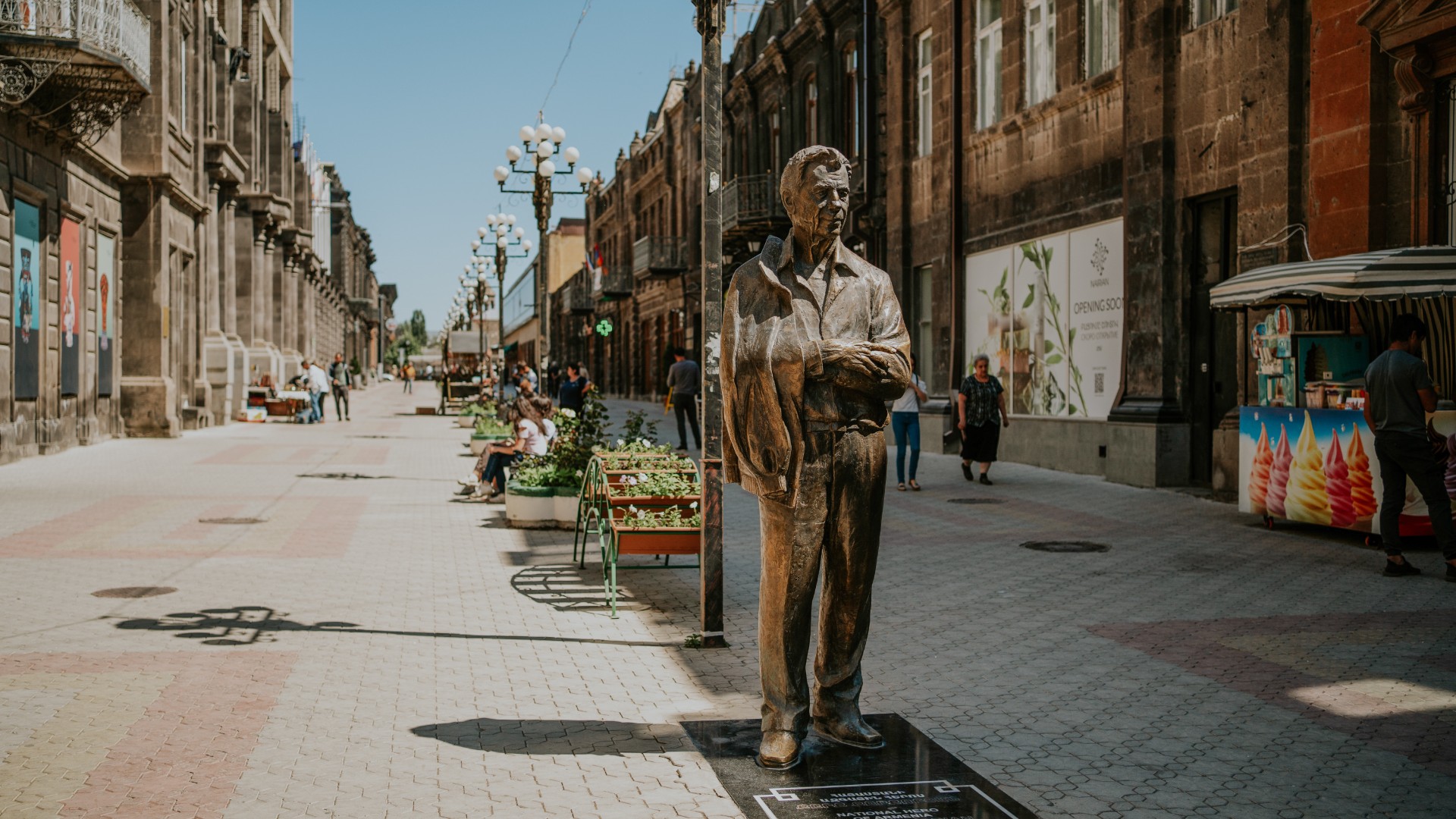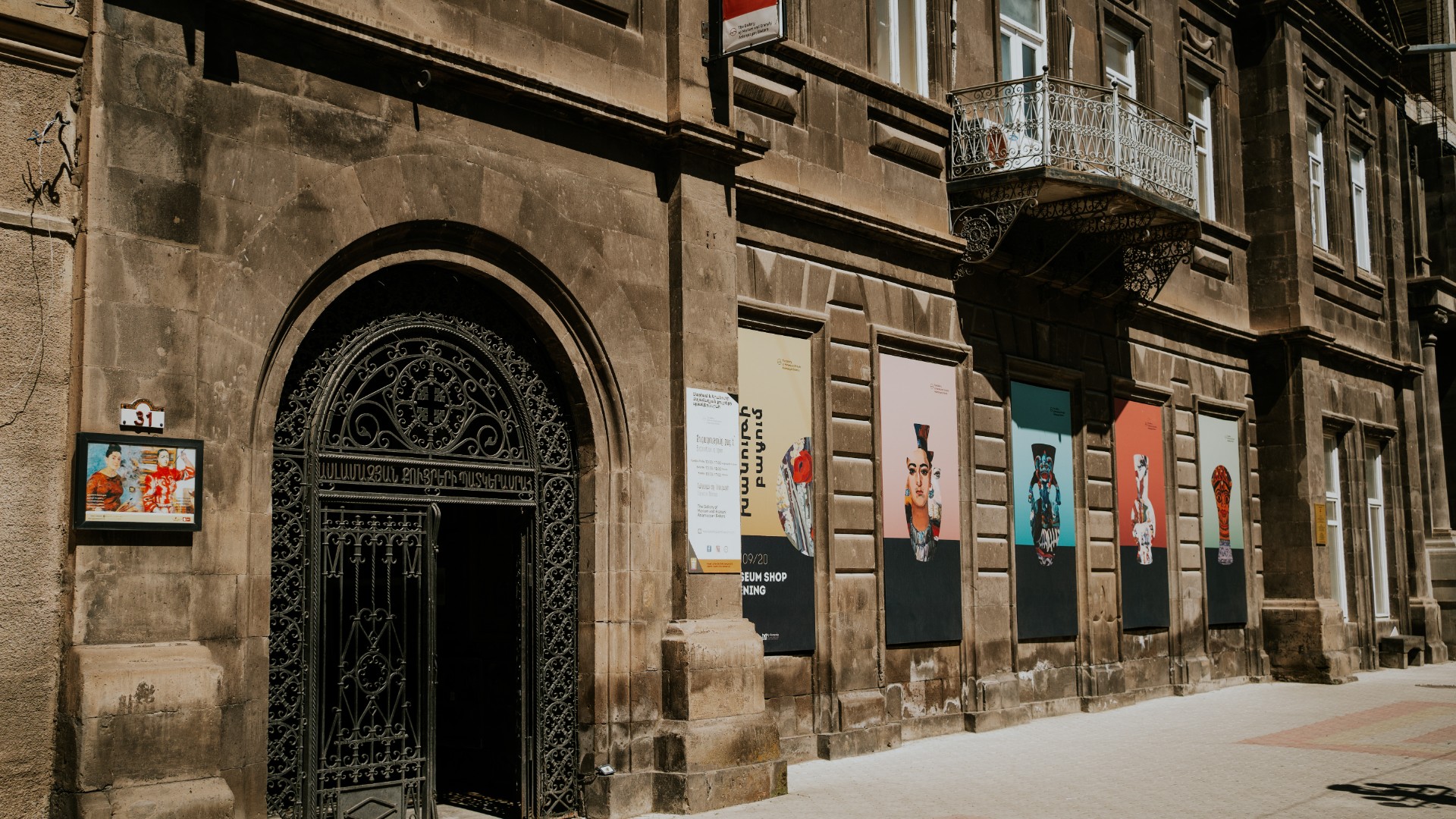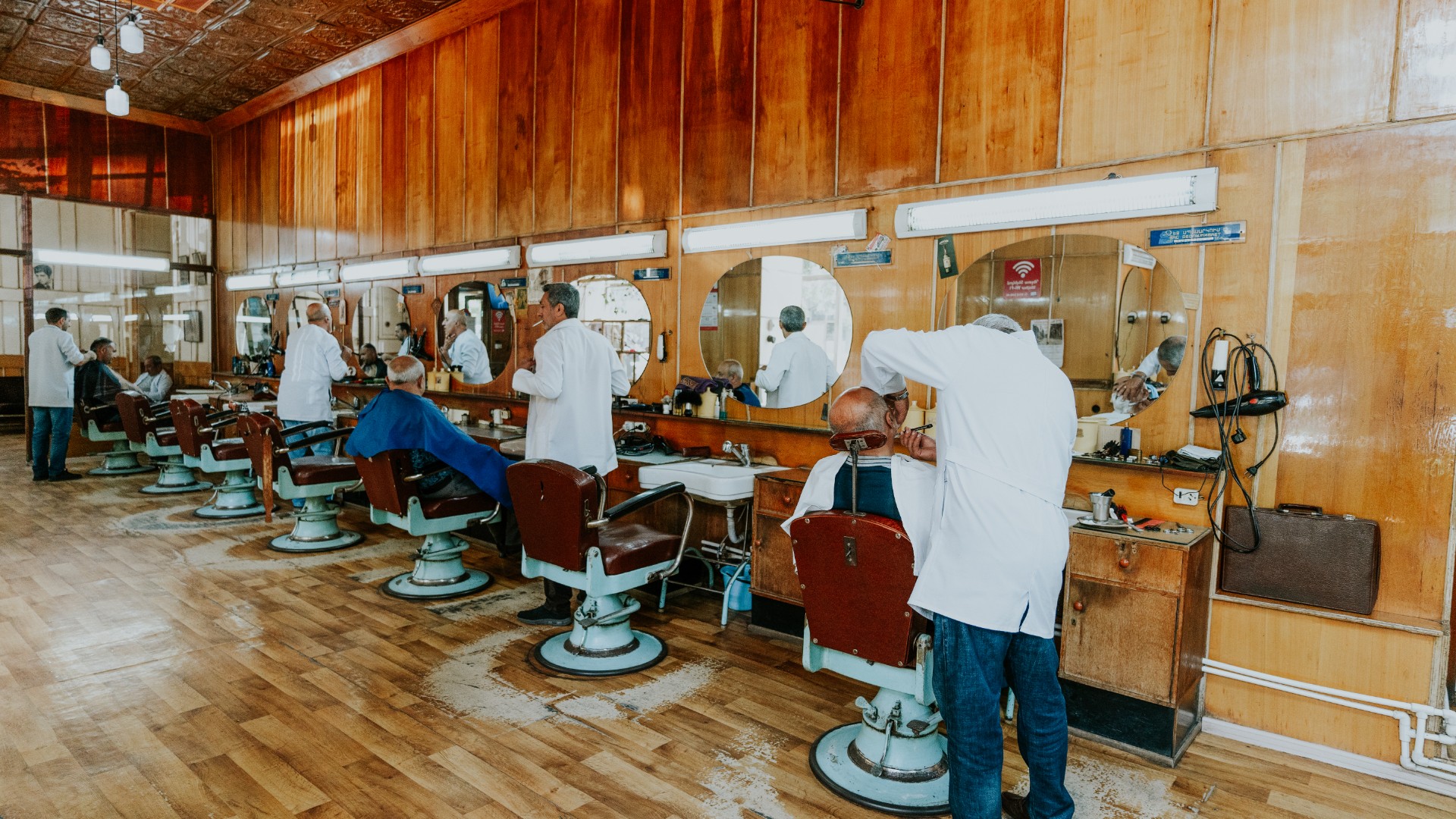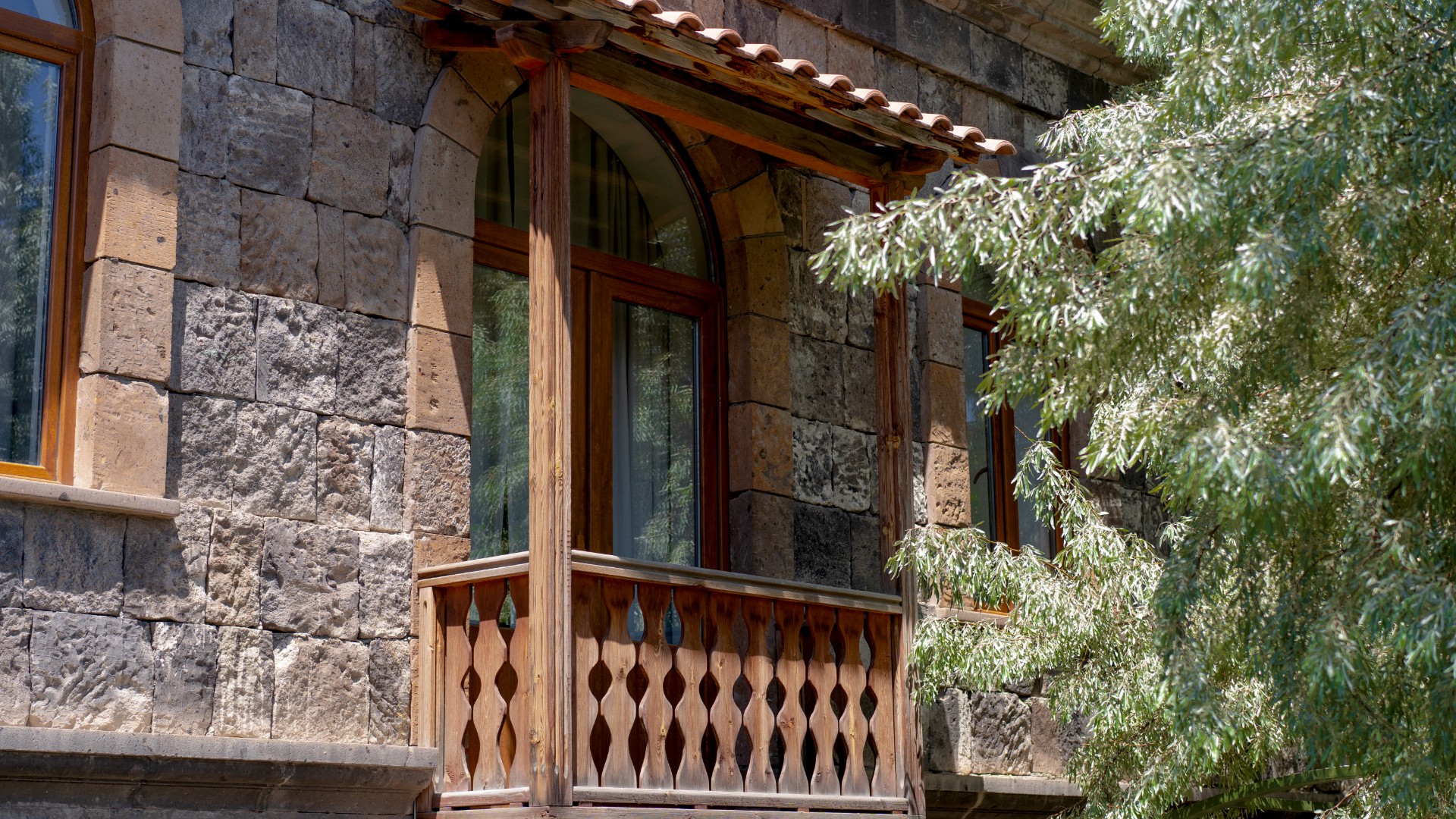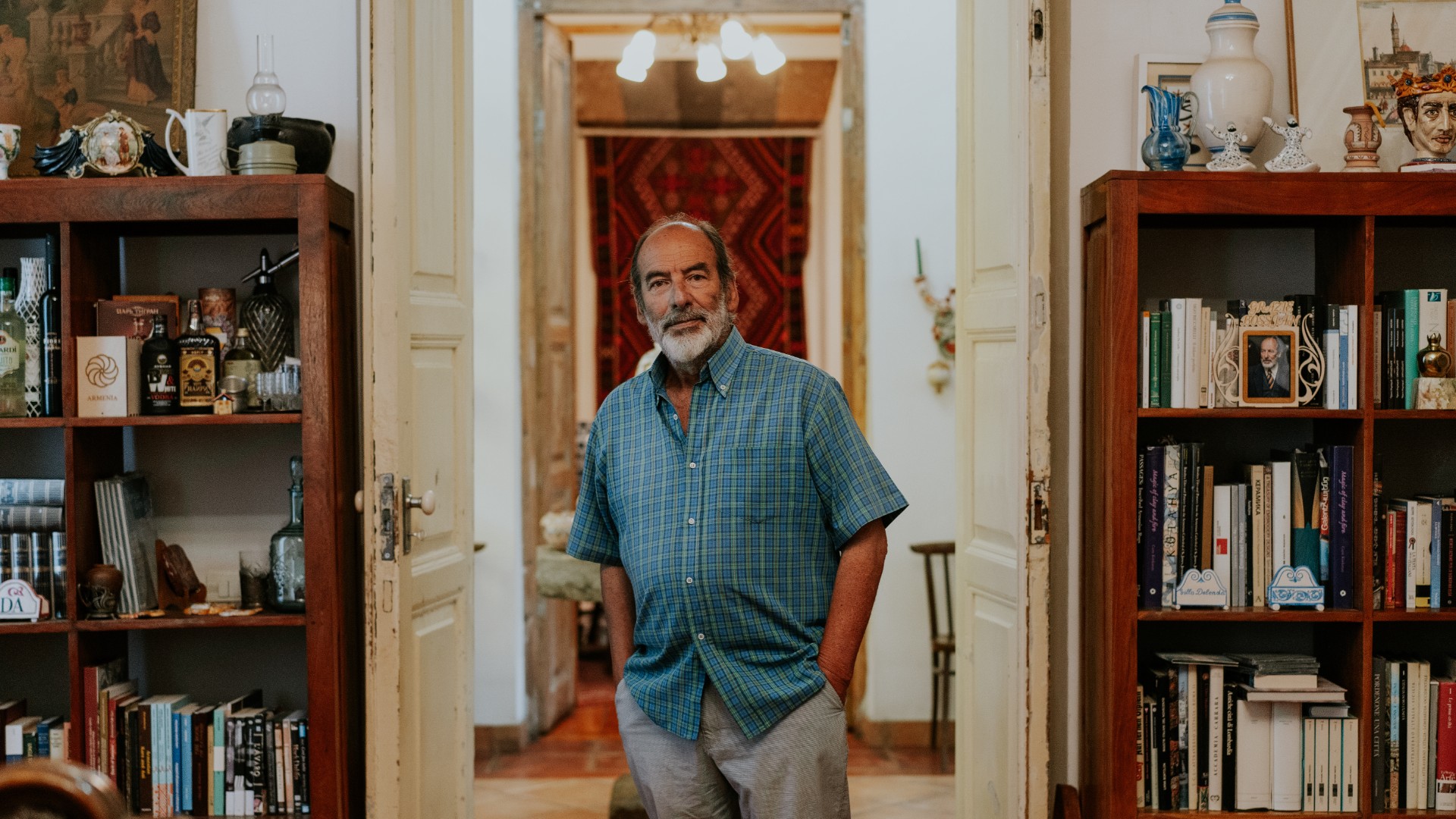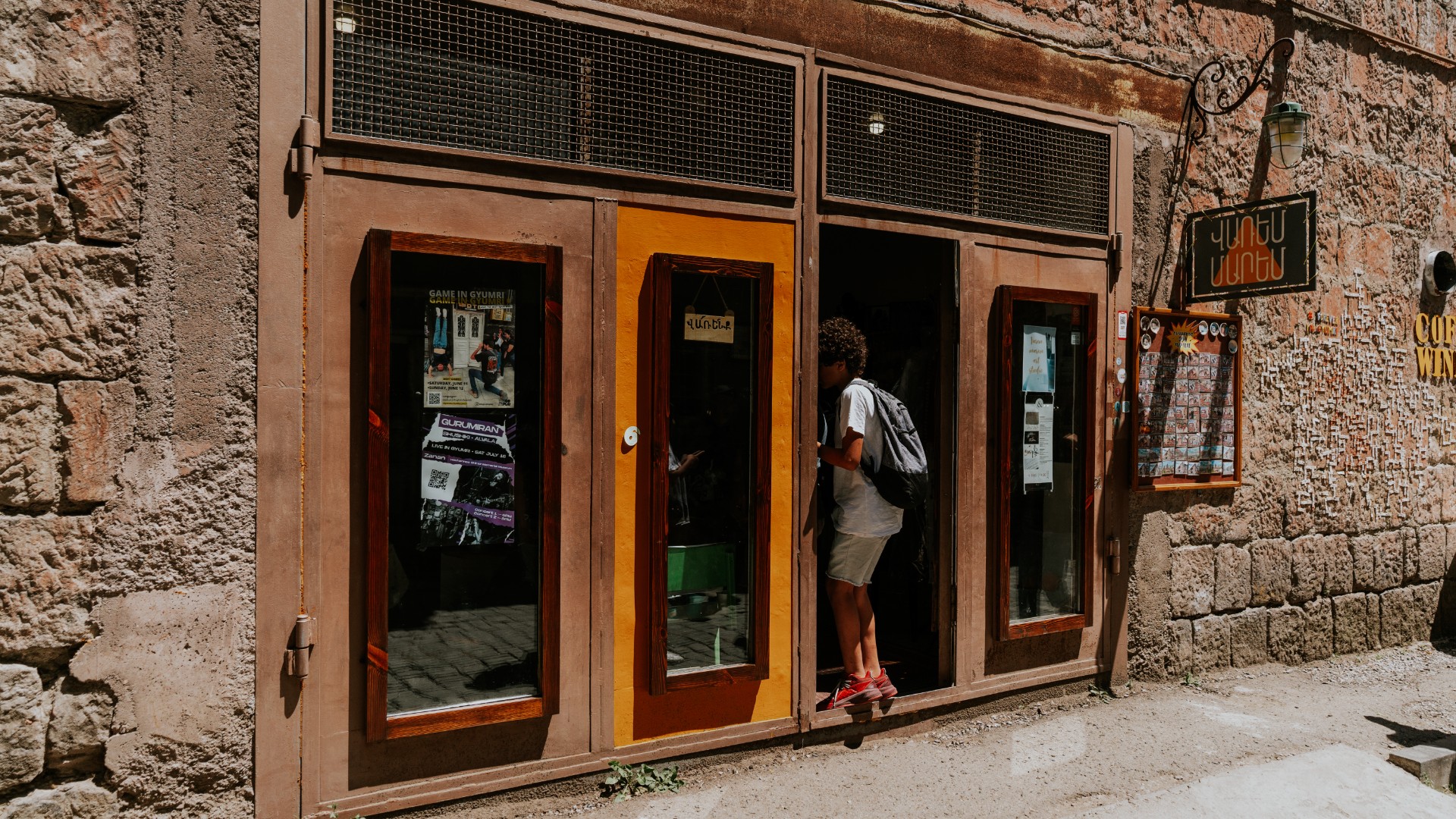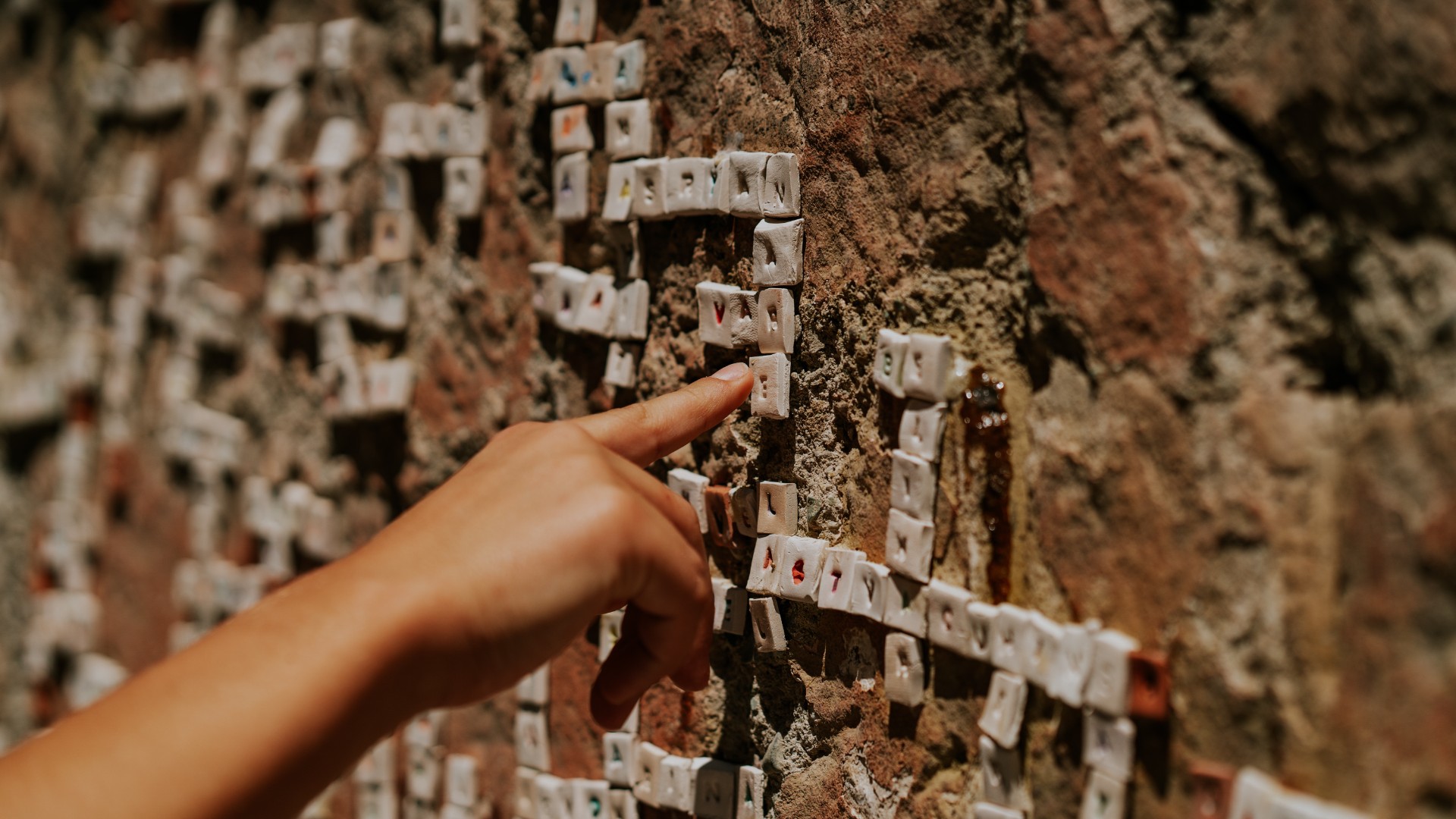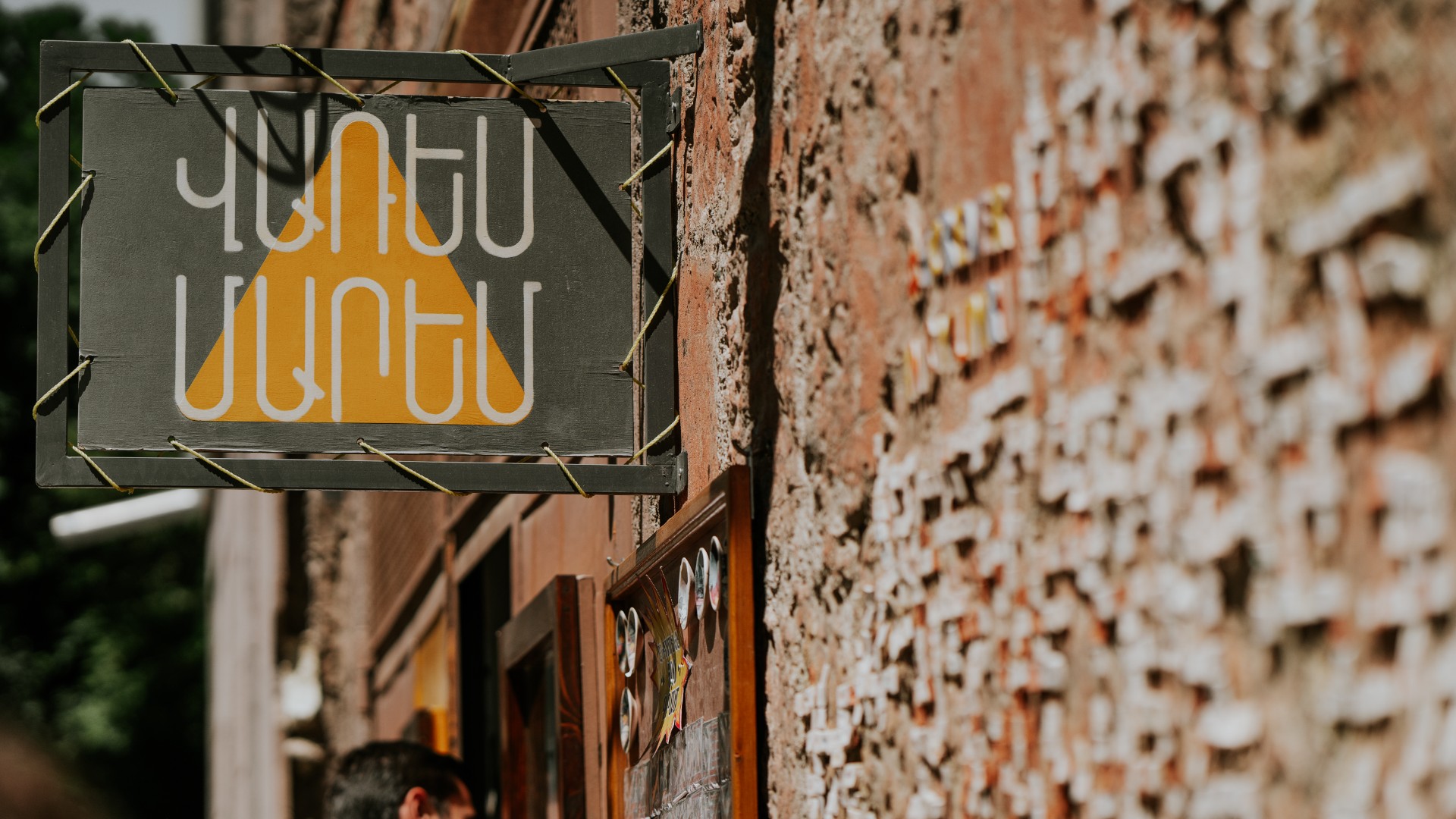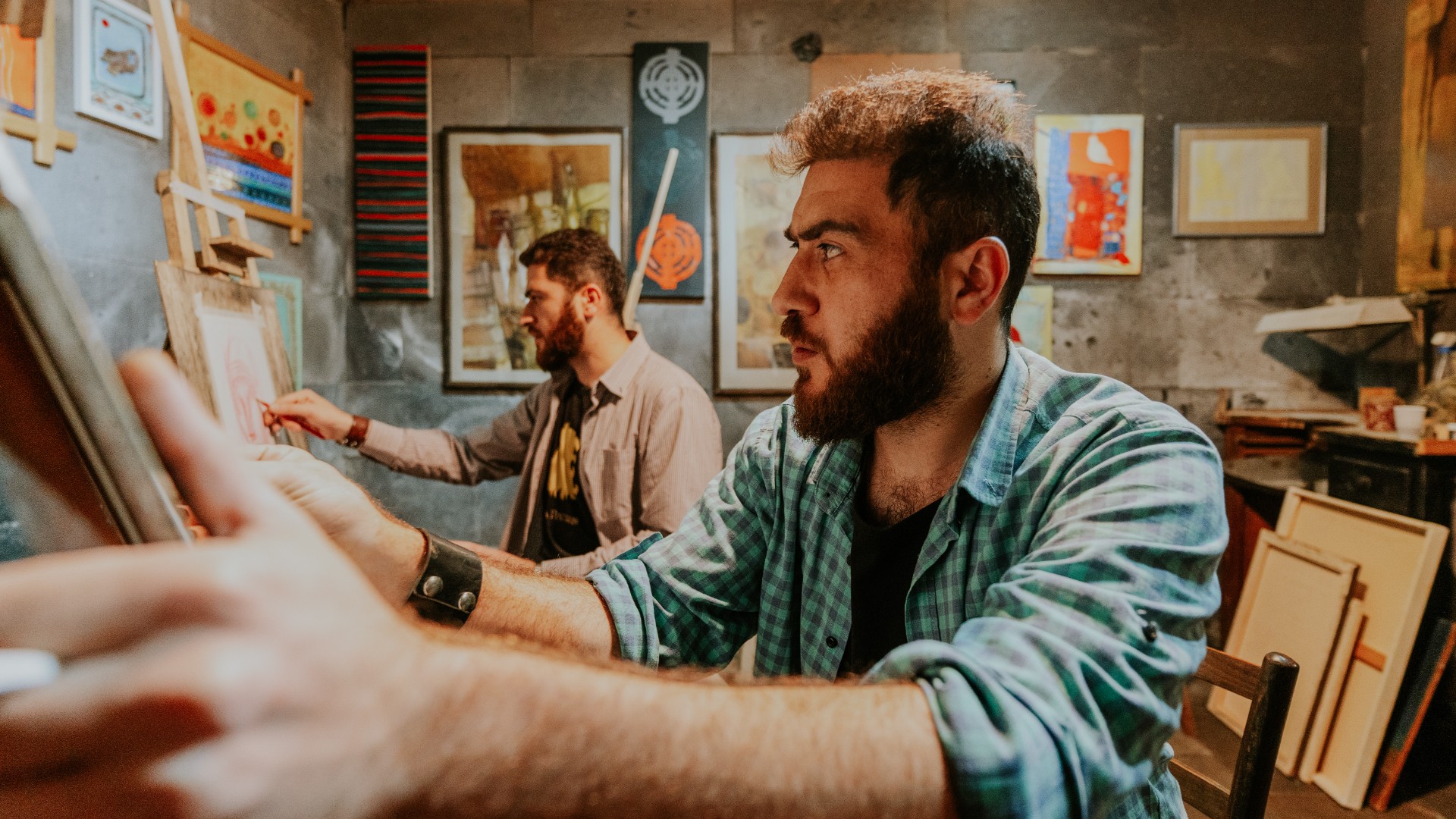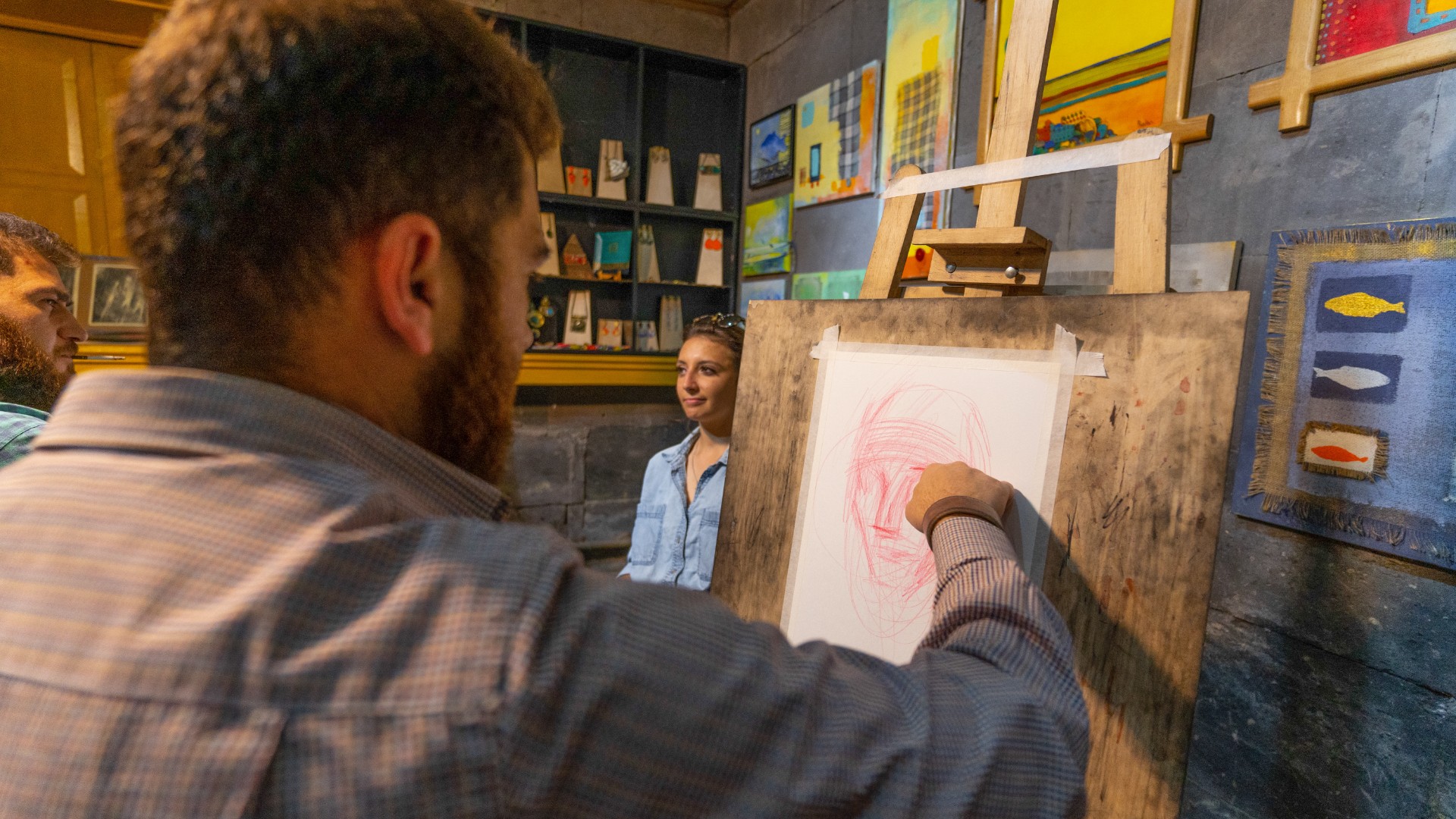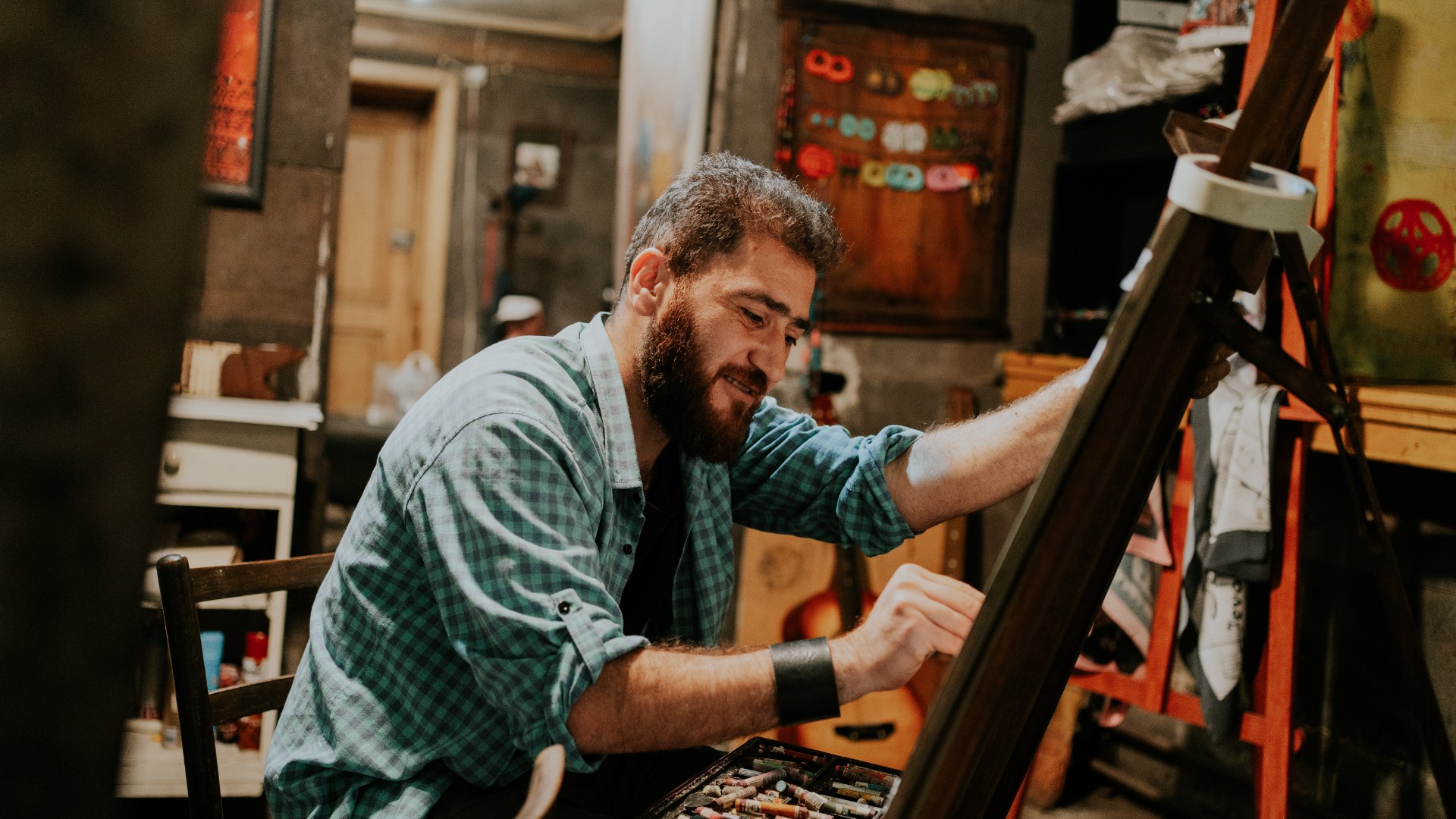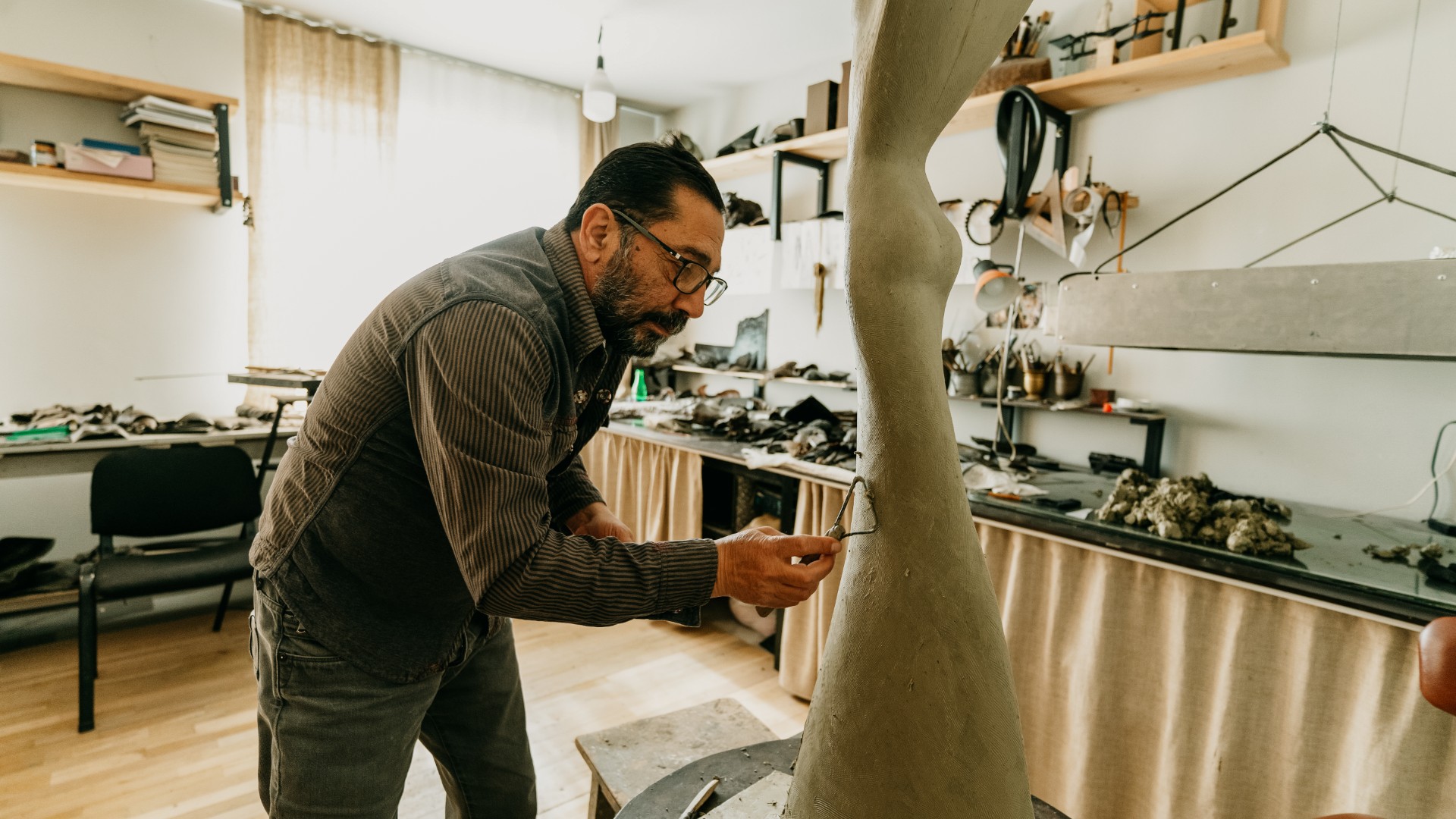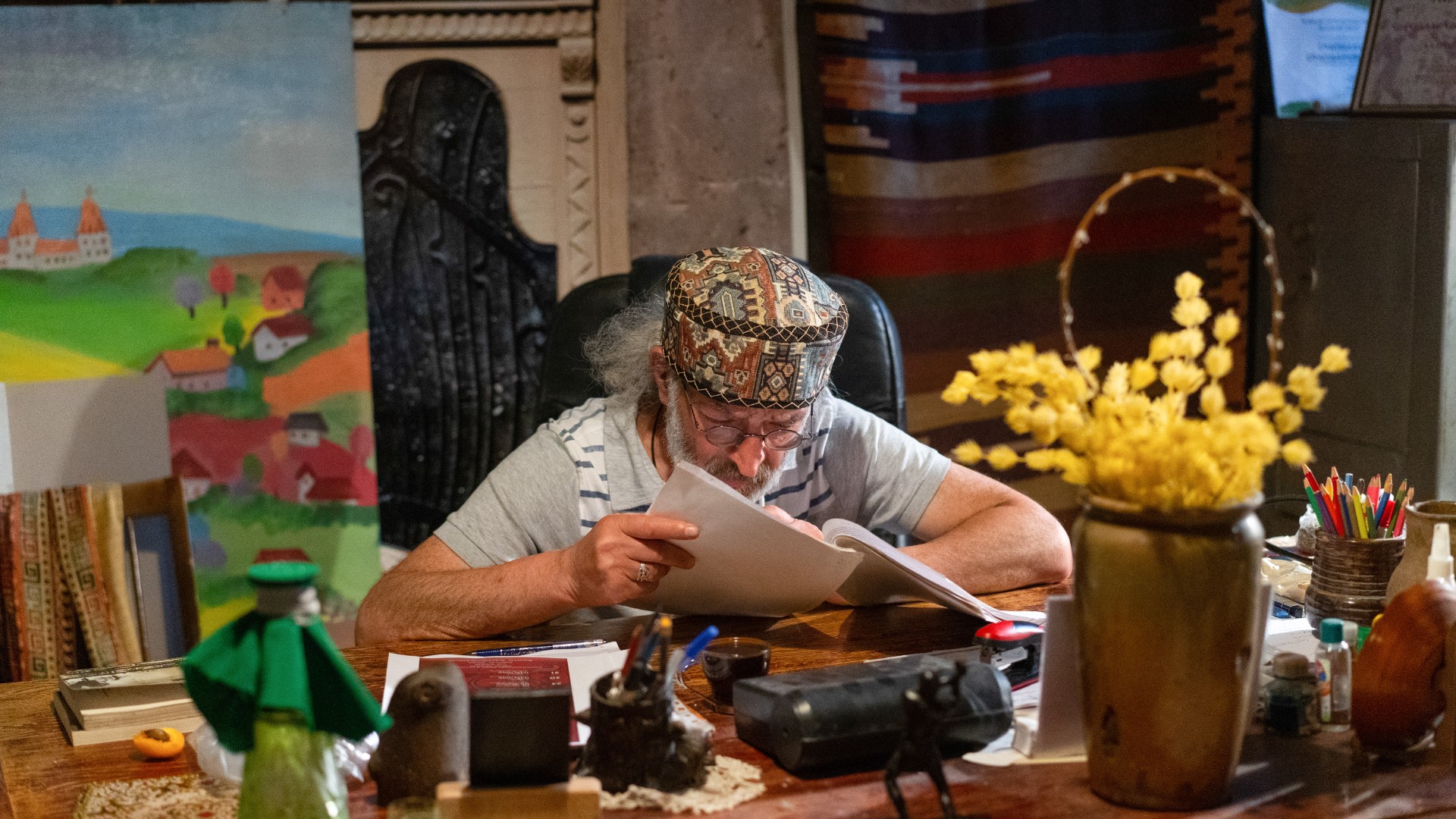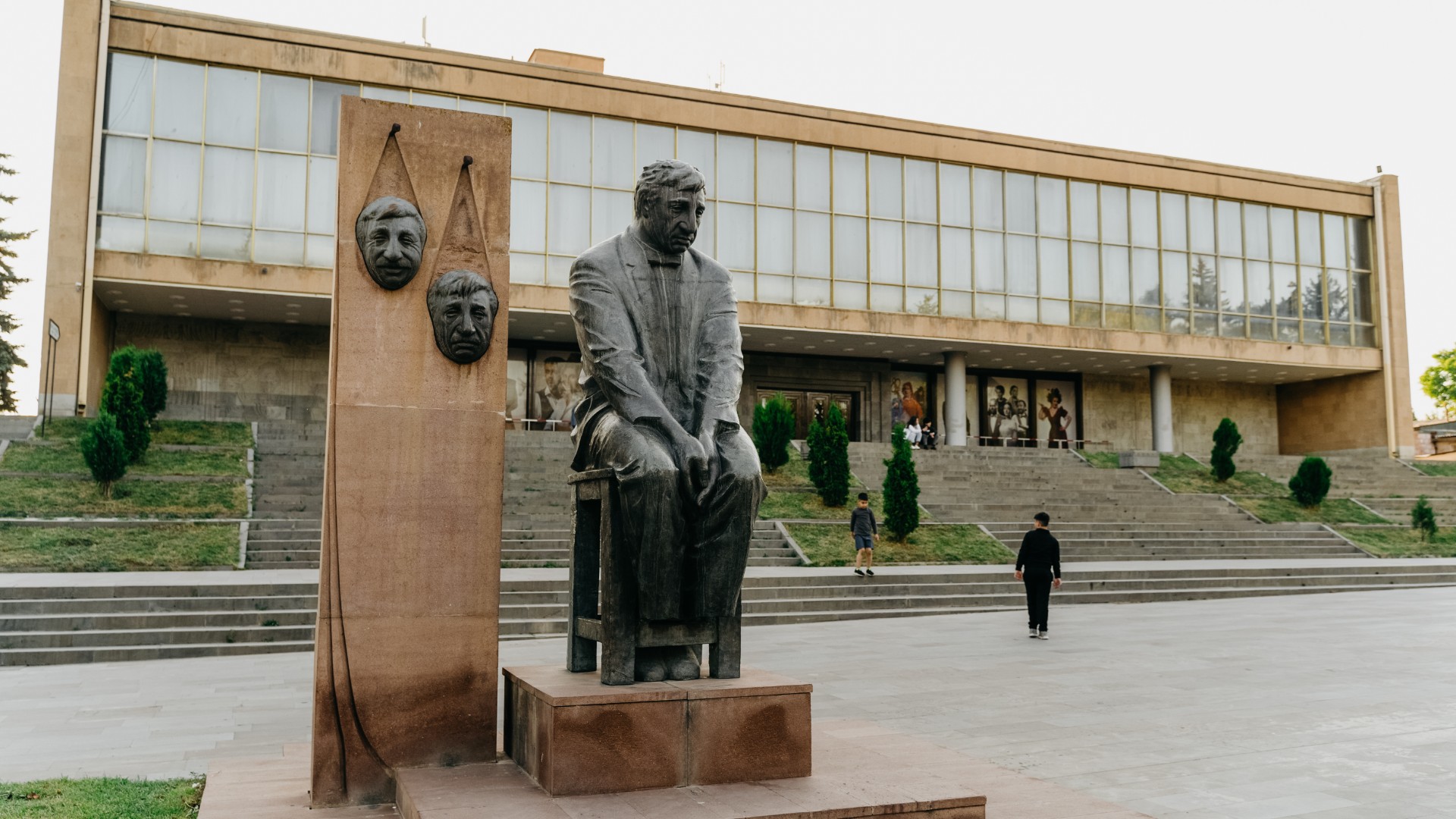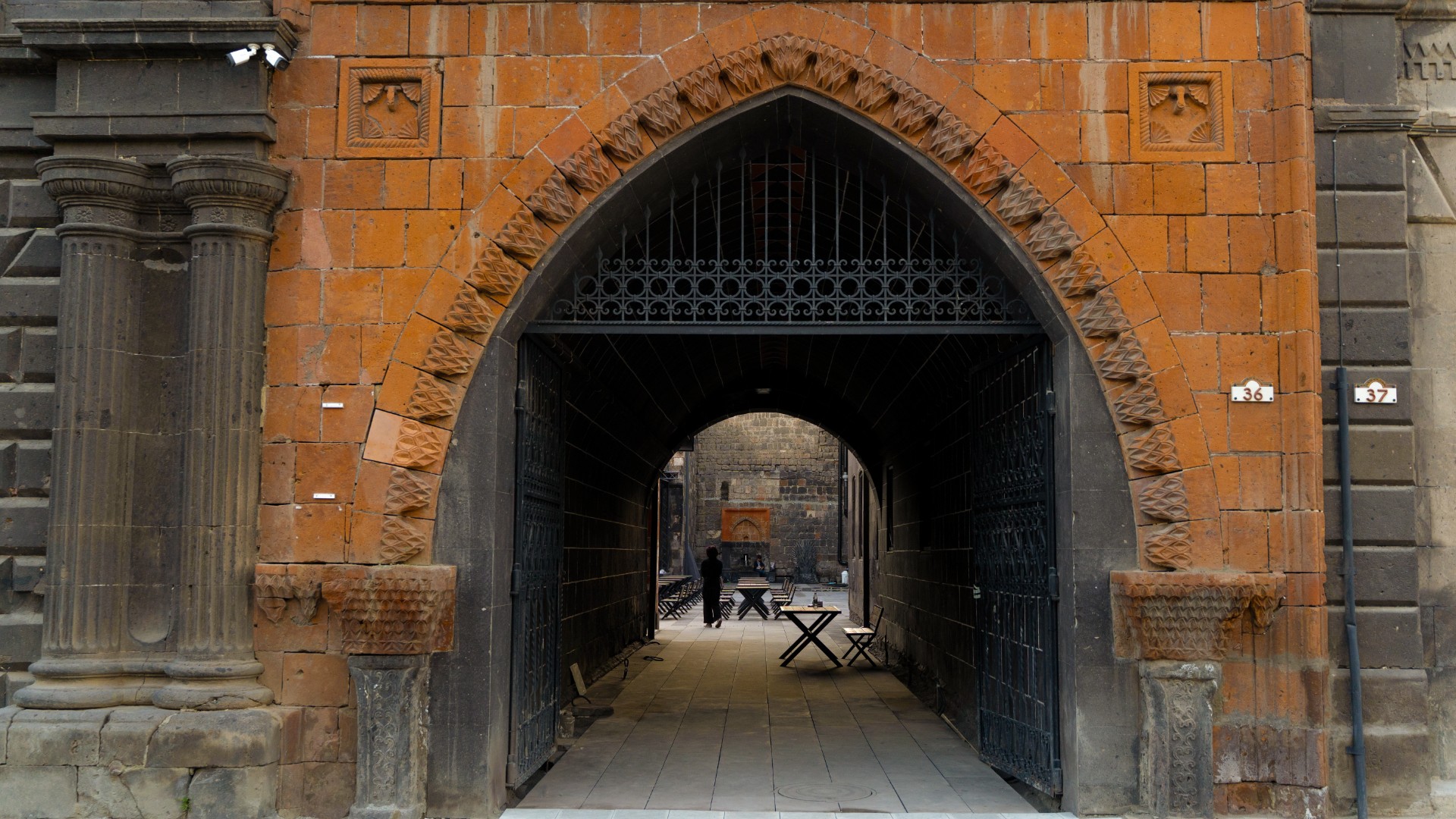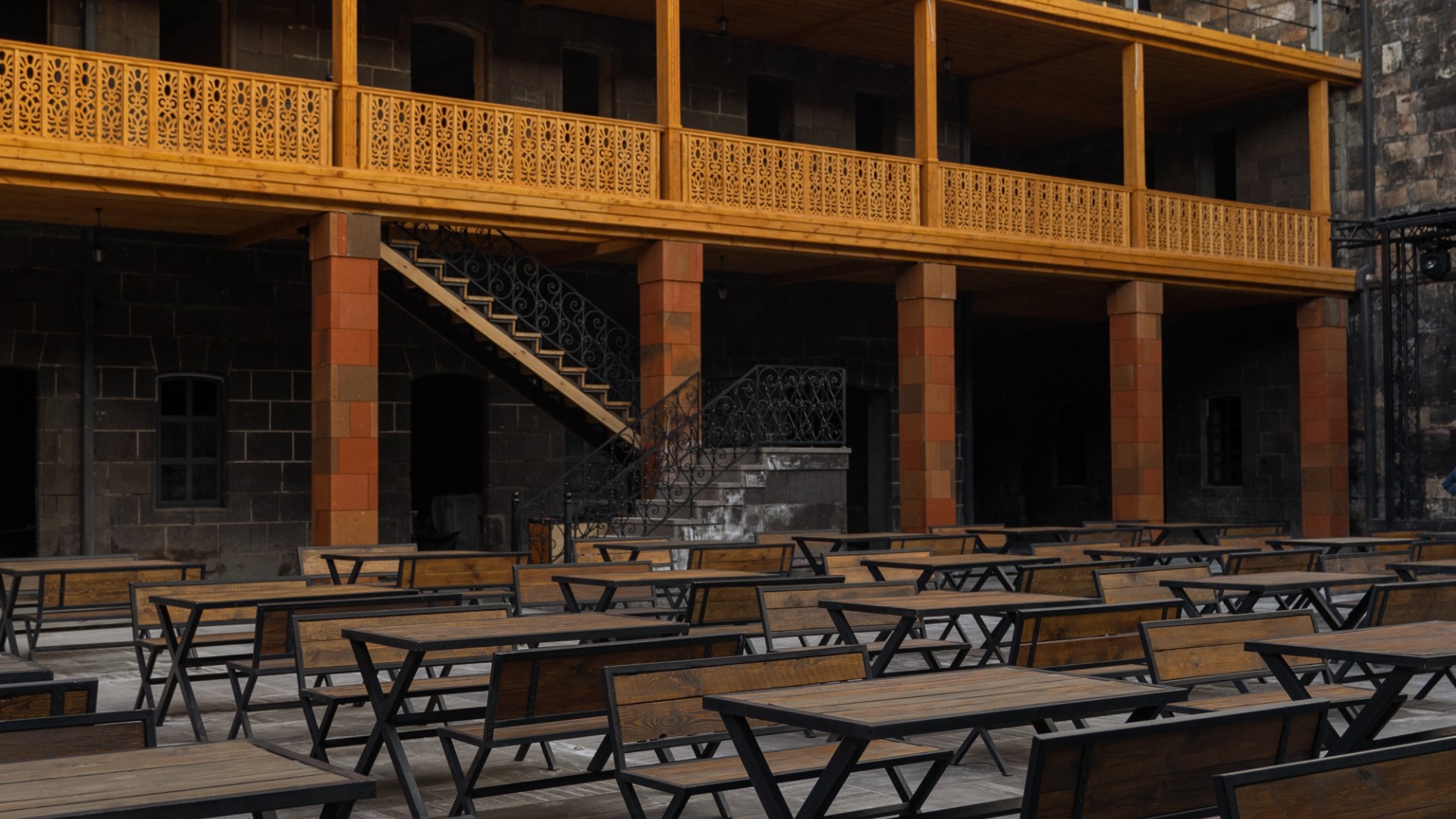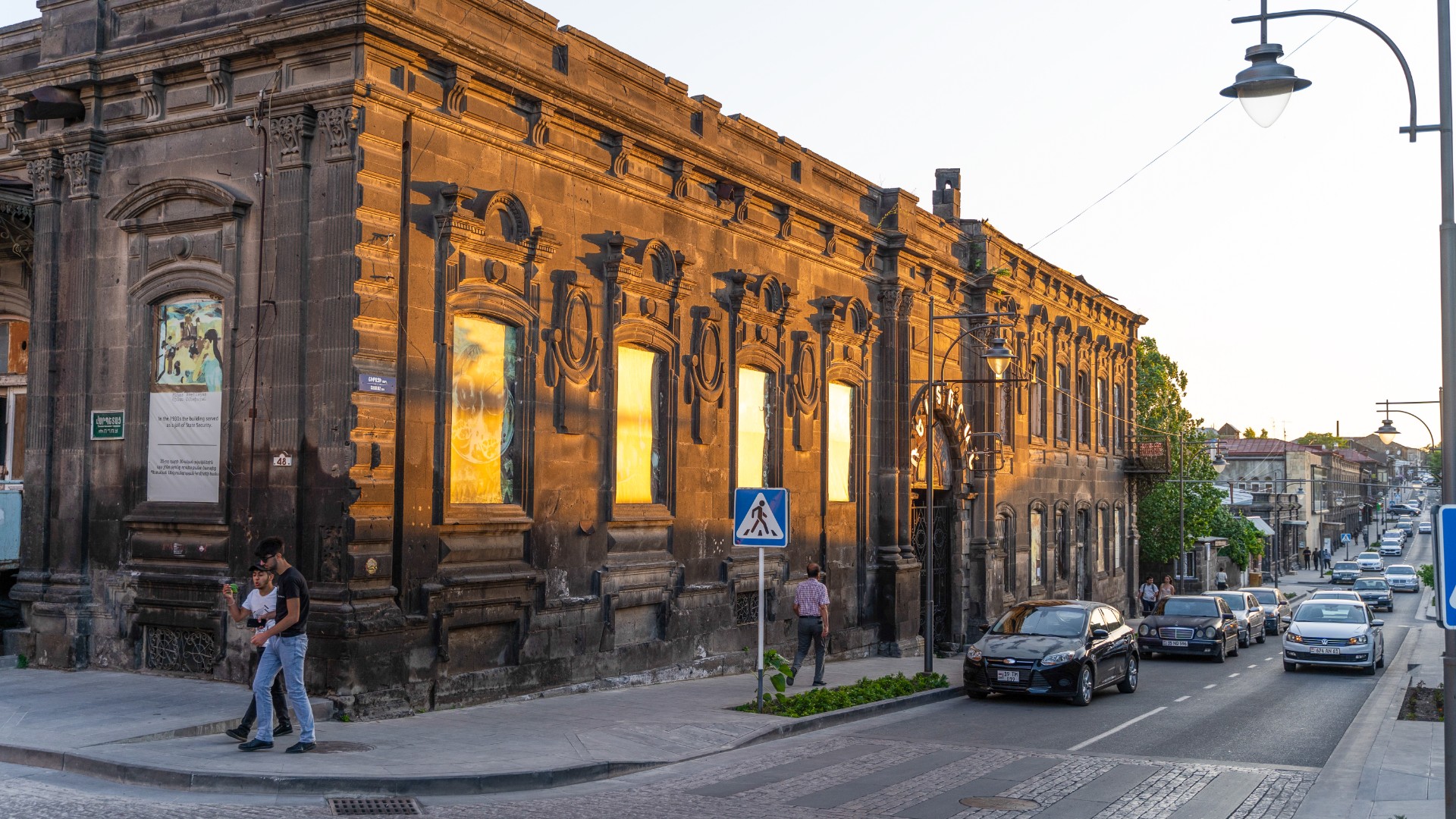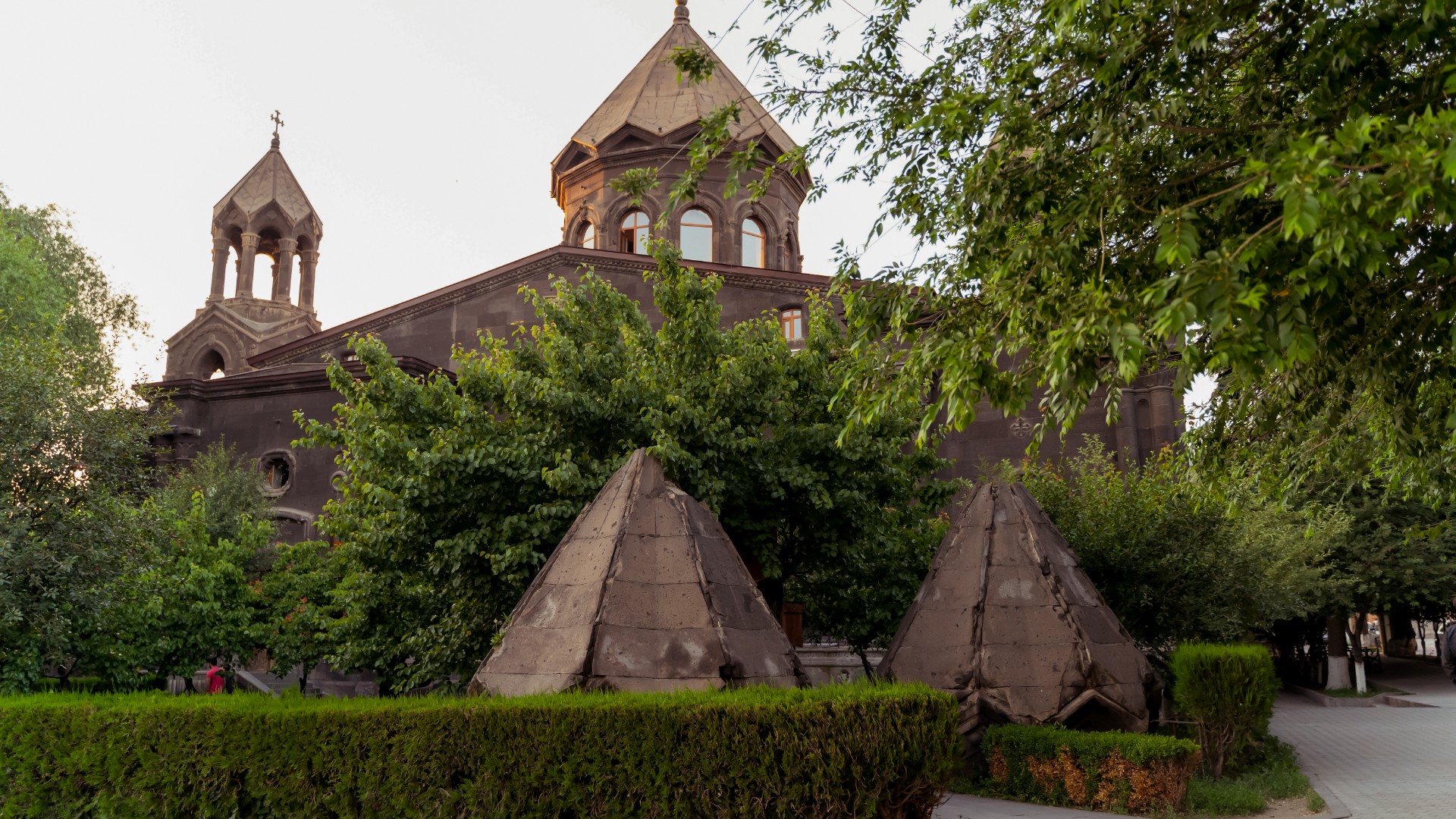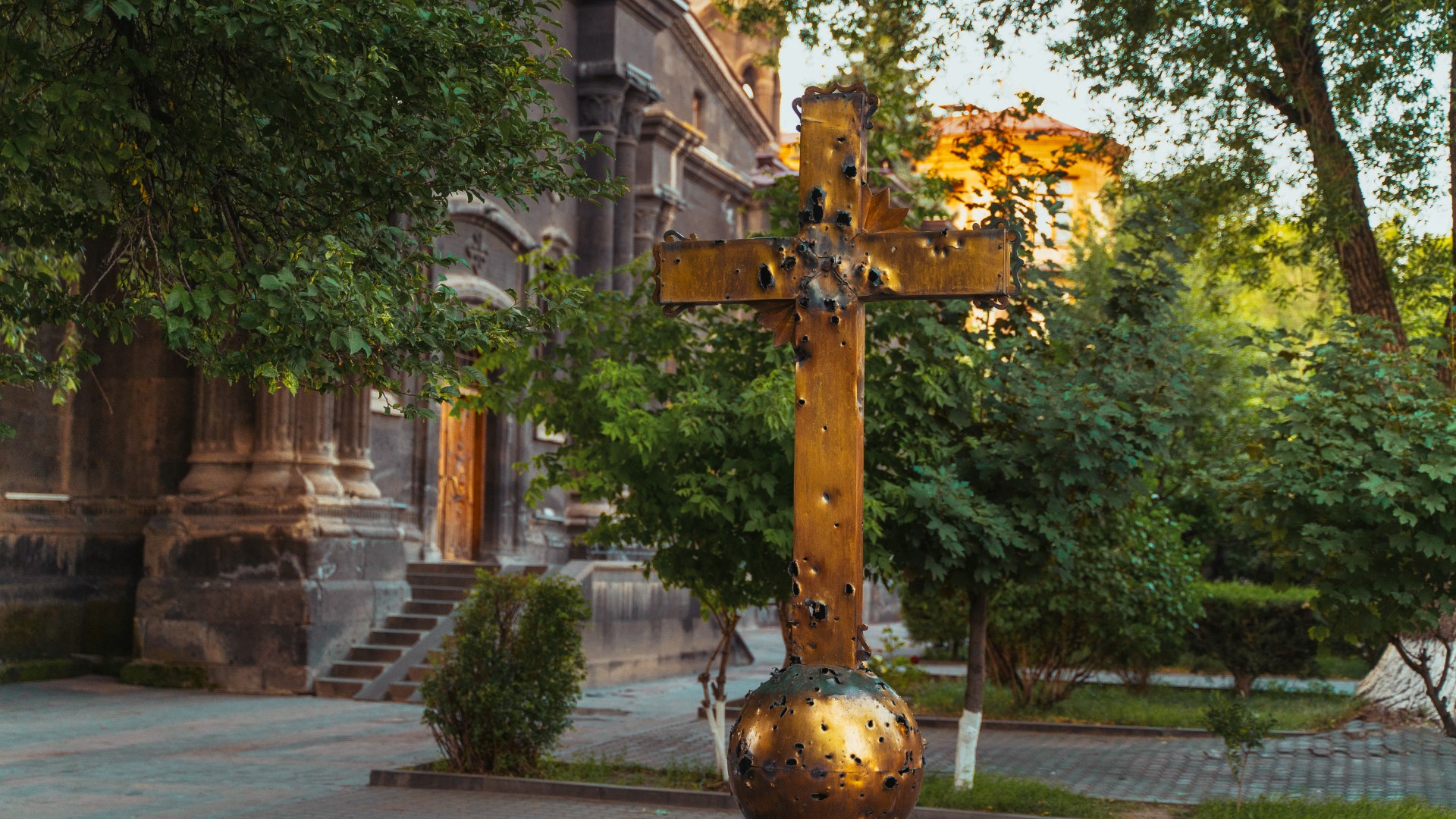Gyumri
Weather and climate
Armenia's second largest city with its noble black and apricot architecture, pottery workshops, and sweet cafes is rightfully considered the cultural center of the country. Gyumri's history is soaked with music, art, and fun. Rich theater life here has left a mark, reflected in the unique sense of humor of Gyumri's local residents.
The history of Gyumri
In the past, Gyumri was at a crossroads of international trend. Originally, the city was called Kumayri. Over the course of its long history, Gyumri survived a lot: inclusion in the Persian empire, conquest by Tamerlane and then by Turkic tribes... In 1813, the city was included in the Russian empire and renamed Alexandropol after the Russian empress Alexandra Fyodorovna. A hundred years later, Armenia became part of the USSR, and the city was renamed Leninakan. When Armenia became independent, Gyumri regained its historical name. Despite two major earthquakes — in 1926 and 1988 — the city still managed to preserve its unique beauty with authentic Armenian architecture, where each street tells its own story.
Gyumri today
Today, almost 150 thousand people live in Gyumri. Due to the rich historical and cultural life, the city is becoming a popular tourist destination. The city has everything you need for a comfortable life: banks, schools and etc. Now the city is actively developing: new companies are appearing, many of which are expanding and promoting the information technology industry. The tourism sector is also developing: authentic hotels, stylish restaurants are opening, new recreation areas have also been created in the city. Now, for example, the iconic Druzhba Park/Friendship Park is being restored in the city. The renovated park will become the first modern green zone of the republic, connecting the historical center of Gyumri with residential and industrial areas.
What to see in Gyumri?
Vardanants Square
Vardanants Square is one of the most important sights of Gyumri. This square is surrounded by fountains, historical houses and temples. On the territory of the square there are two majestic temples. The Church of the Holy Savior is the highest church in Armenia, it looks like the ancient Ani Cathedral, the ruins of which have been preserved in the city of Ani (Turkey). The Church of the Holy Savior was destroyed during the Spitak earthquake and completely restored. Opposite is the Church of the Holy Virgin, two domes of this church were also destroyed during the earthquake. These domes still stand in the middle of the courtyard of the Lord's temple. Also on the square there are monuments to Vardan Mamikonyan and other freedom-fighters who fought against Sasanian Persia.
Old Town, Kumayri district
The old city of Gyumri is one of those rare places in the country where you can see the original Armenian architecture of the 18th and 19th centuries. This area of the city will take you to another era, where horse-drawn carriages pass by historic buildings.
Abovyan Street
Abovyan Street is one of the first streets in the city, part of the historic district "Kumayri" and symbolizes the "golden age" of Gyumri. This street is a real treasure trove of knowledge about the history, culture, architecture and traditions of the city. The houses here are built of black tuff. The walls, windows and front entrances are decorated with elaborate stone carvings. Every house looks like a real work of art! By visiting this street you will get aesthetic pleasure and get better acquainted with Armenian architecture. Here you can see the first puppet theatre in Armenia, the first city pharmacy and the first inclusive bakery.
Iron Fountain
The Iron Fountain, also known as theFountain of Friendship, is an art object and an example Soviet modernism. In the past, it was a crowded place where families took their children for a stroll, but after the earthquake, it was deserted. The monumental structure has lost its splendor, but the dignity is intact, and the gloomy shade the sculpture has acquired now serves as a symbol of Gyumri's unbreakable spirit.
Black Fortress
The formidable Black Fortress on top of the hill used to defend Gyumri from the Ottoman Empire,when the city was part of the Russian Empire. Today, tourists climb the hill to enjoy the views. Next to the fortress is the highest monument in Gyumri – a huge statue of Mother Armenia, which towers over the city and looks as if guarding it.
Culture in Gyumri
The cultural life in Gyumri is very diverse. There are a large number of original museums in the city, where you can improve your knowledge and take inspiration.
First of all, we recommend you to visit the Museum of National Architecture and Urban Life of Gyumri, where you can get acquainted with the daily life of the city and its residents of the late 19th century. The museum is located in a typical house of that time, built in 1872 by wealthy merchant Petros Dzitoghtsyan. Here you can see furniture from Italy, Russia and other European countries, as well as handmade carpets from local workshops.
Gyumri is the hometown of many famous, talented people, from popular actors to Olympic champions.The star of the city is the famous actor Frunzik Mkrtchyan, who managed to become a favourite of the entire USSR. The museum dedicated to his creative and personal life is located in a former restaurant, where Mkrtchyan was a frequent visitor.
If art is close to your heart, don't miss an opportunity to visit the Aslamazyan Sisters Museum. These talented ladies were born at the end of the 20th century in a traditional patriarchal family. Despite this, the girls were among the first to fight for freedom of expression. They traveled a lot and expressed their own vision of the world in paintings and ceramic sculptures. These artists of the Soviet era broke the stereotypes about Soviet visual art.
We advise all fans of the work of Martiros Saryan to familiarize themselves with the works of his follower Minas Avetisyan. The house-museum of this artist is located at a distance of 10 km from the city.
Another recommendation is to visit the house-museum of Hovhannes Shiraz, a famous poet and another outstanding personality from Gyumri. The house-museum is located in a building that was built in 1883 by a wealthy resident of Alexandropol – Keshishyan. Due to the extreme poverty of the family, Hovhannes Shiraz grew up in an orphanage. He didn't have a home, but he was so loved by everyone and talented that Gyumri made one of its most beautiful buildings into his museum.
The best places to eat in Gyumri
Getting to know a new region is impossible without tasting special dishes of local cuisine. The climate in the Shirak region is cold, which means that meat and hot dishes are preferred in food.
The most traditional and unique dish of the Shirak region is kyalla. This is the head of a cow or lamb/ram/mutton baked in a tonir (oven in the ground), seasoned with various spices. You can taste up to nine different flavours from one head: from delicate cheeks to tongue and brain, which is served separately. Serving the dish looks very exotic, especially for an unprepared gourmet.
We also recommend you to taste the flavourful Shirak papkeni. In each region, papkeni is cooked in its own way. In Gyumri, it is fried minced lamb/ram/mutton with spices and a piquant taste of cinnamon.
Another popular dish in Gyumri is considered to be Dtmachash (translated from Armenian – pumpkin lunch). Pumpkin soup with a delicate taste is especially good on a hot summer day. And, of course, you should try Tatar boraks with matsun and garlic.
For dessert, try jagli (airy puff pastry sprinkled with sugar) and incredibly healthy barley coffee with a pleasant bread flavour.
What to combine a trip to Gyumri with
Gyumri is located 126 km from Yerevan (2-2.5 hours by car). On the way, you can stop at the impressive Dashtadem Fortress. In Armenian, Dashtadem means "in front of the field", which perfectly describes the image of the fortress. The long walls of the majestic octagonal shape in warm tones made of Armenian tuff seem to separate the fortress from the outside world.
After that, you should visit the Yereruyk Temple. This temple is considered as one of the first Christian buildings in Armenia. Yereruyk will also be considered to be included in the list of UNESCO World Heritage Sites.
Another piece of architectural art is the Arichavank Monastery. During the construction of the monastery, large stone blocks of various colours were used, as a result the walls of the monastery acquired an unusual artistic look with a special ornament.
During the trip you should also visit "Lake Arpi" - a national park with wide broad plains and gentle slopes. There are about 670 species of plants growing here, about 255 animals live and 10 of them are listed in the Red Book. In the heart of the reserve is the picturesque Lake Arpi – the second largest lake in Armenia. An hour away/drive from Arpi is the Marmashen Monastery, which is more than 1000 years old. The main feature of the monastery is the thoughtful architectural composition of the structure. Each element of the structure has a certain style and demonstrates how the heritage of the Armenian architectural classics creatively changed in the XI century.
There was a sending error, try refreshing the page and sending again.
Thanks! The manager will contact you soon.
